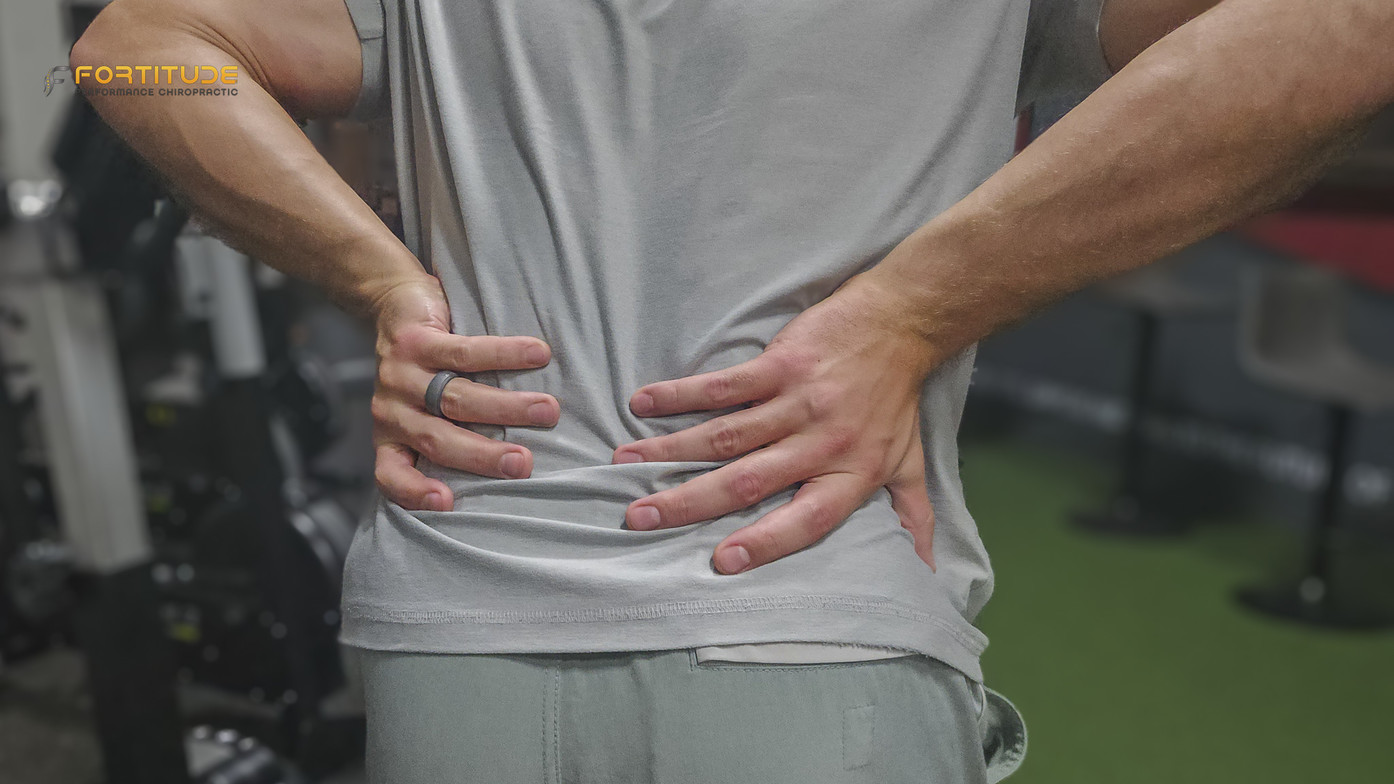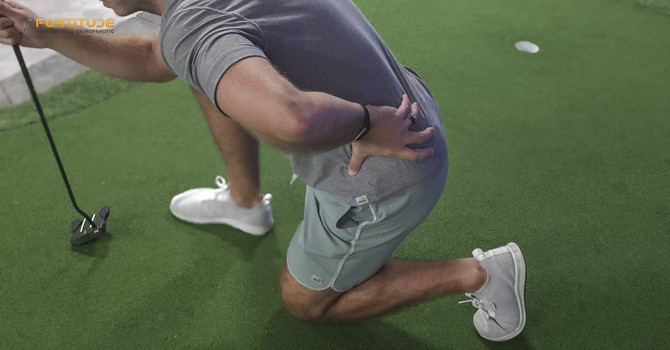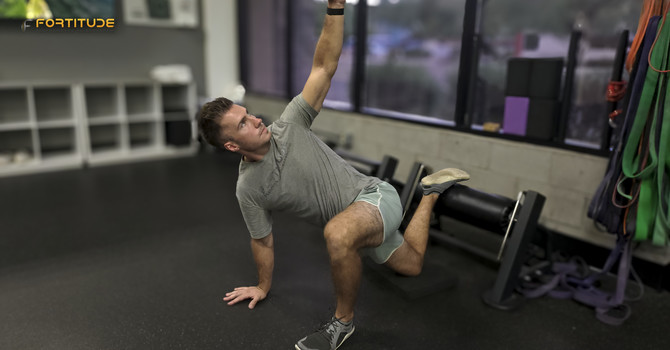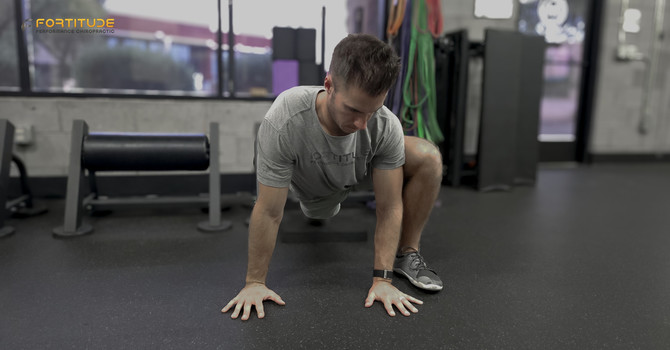
Why Cortisone Shots Often Fail for Chronic Joint and Back Pain
Ever felt a wave of relief after a cortisone shot for your knee or back, only to have the pain creep back a few months later?
You go for a second shot, but this time the relief only lasts six weeks.
They recommend a third round, but you’re lucky if it works for a couple of weeks.. if at all.
You’re not alone.
Many people with chronic joint pain or persistent back pain ride an “injection rollercoaster”: a cortisone injection brings hope and short-term relief, but the pain soon returns, leaving you frustrated and wondering what went wrong.
It’s easy to assume that if the pain comes back, you might need another shot, or that something is really wrong with you. In reality, the false hope and recurring pain aren’t your fault. This is a limitation of cortisone itself.

In this blog, we’ll cover:
- Why cortisone shots often don’t fix chronic pain long term
- What a cortisone actually does and doesn’t do
- The downsides to know about cortisone shots
- What alternatives can offer real, lasting relief
Why Cortisone Shots Don’t Work (Long Term)
Cortisone shots (steroid injections) are basically an anti-inflammatory band-aid. They are a lab-made version of your body’s cortisol hormone, designed to calm inflammation.
When injected into a painful joint or near an irritated nerve, cortisone can quiet inflammation quickly, and in the short term, less inflammation often means less pain. That is why people sometimes walk out of the clinic feeling dramatically better.
The problem is, cortisone doesn’t actually fix the reason you hurt. It doesn’t have any healing properties.
Its main role is to reduce pain just enough so you can move, exercise, and rehab more effectively. Think of it as buying you time and comfort, but the real improvement comes from your body doing the work through therapy, exercise, and recovery.
“It’s like turning off your car’s check engine light without fixing the engine. The alarm stops for a while, but the problem is still there.” — Dr. Molly
Once the cortisone wears off, inflammation often comes back because the root cause, whether it’s arthritis wear, a tendon strain, or poor joint mechanics, has not been addressed.
That is why cortisone injections so often provide short-term relief but long-term disappointment. You might feel better for weeks or months, but unless you correct the reason you have pain, it’s likely to return just as bad, if not worse.
The problem of diminishing returns
Many people notice that each shot seems to last for a shorter period than the one before. In some cases, the underlying condition is getting worse. In others, your body simply becomes less responsive to the drug’s anti-inflammatory effect. Either way, once the medicine fades, the pain tends to come back because the real problem, like worn cartilage, weak or tight muscles, or poor movement patterns, is still there.
Key takeaways:
Cortisone can give you short-term relief
It does not heal the underlying issue
Pain often returns once the drug wears off
Best results come when you use the pain-free window for rehab to address the root cause.
There is also a common misconception. Just because the pain disappears after a shot doesn’t mean the cortisone fixed the problem. All it really did was turn down your pain signals for a while. That short window of relief can be valuable if you use it to start or ramp up a targeted rehab program. If you simply rest until the pain returns, you are back at square one.
“A steroid shot can press pause on pain, but it doesn’t fix the why. We use that window to retrain movement so the pain has no reason to come back.”
— Dr. Molly, Fortitude Performance Chiropractic
Side Effects of Cortisone Injections (Hidden Downsides)
Cortisone shots might sound simple, a quick injection and the pain goes away, but they do come with side effects and risks that people are not always told in detail.
Immediate side effects
It is not unusual to feel pain at the injection site or have a short flare-up of pain and swelling for a day or two after the shot. This is sometimes called a steroid flare, as the medication can irritate tissue briefly before the anti-inflammatory effect kicks in.
You might also notice bruising or redness where the needle went in. Some people experience trouble sleeping or a warm, flushed face for a couple of days afterward. If you have diabetes, a cortisone injection can cause a spike in blood sugar for about a week, so it needs to be monitored.
Infection risk
Any time the skin is punctured, there is a small risk of infection. This is rare because providers keep things sterile, but it can be serious. Watch for worsening pain, redness, swelling, or fever.
Tissue and joint damage over time
Frequent cortisone use can weaken tissues in and around the joint. Steroids in high amounts can signal the body to break down tissue instead of rebuilding it. Over time, this may weaken tendons, ligaments, or cartilage, and in some cases speed up arthritis changes.
For example, in knee arthritis, a single steroid shot has been linked to more cartilage loss over two years compared to no injection. In contrast, alternatives like hyaluronic acid alongside rehab addressing the root cause did not show this damage.
Bone thinning
High doses or repeated steroid treatments can reduce bone density, increasing the risk for brittle bones. This is one reason doctors will not inject the same spot repeatedly without breaks.
Hormone effects
Your body naturally makes cortisol. Overusing steroid injections can tell your body to produce less of its own, which is rare but possible with frequent steroid use.
Bottom line: In small, occasional doses, side effects are usually mild and short-lived. But repeated injections carry cumulative risks that can weaken the very tissues you are trying to make stronger..
“If you need shots every few months just to do normal life, the plan needs a reset. We look under the hood at strength, mobility, and mechanics so you can rely less on injections and even ditch them for good.”
— Dr. Maxim, Fortitude Performance Chiropractic
How Many Cortisone Shots Are Safe?
Given the downsides, you might wonder, “How many cortisone shots can I get, or how often, before I risk these problems?” There is no single rule for everyone, but most medical professionals set clear limits on frequency:
Limit per year: A common guideline is no more than 3 to 4 cortisone shots in a single area per year. Many providers say no more than three injections a year in a joint like the knee or shoulder. Going beyond that raises the risk of tissue damage.
Spacing them out: It is usually advised to wait at least 3 months between cortisone injections in the same body part. This gives tissues time to recover and lowers the chance of cumulative damage. If someone suggests shots every few weeks or every month on an ongoing basis, that is a red flag. Monthly steroid injections can raise the risk of more serious side effects, such as bone loss or hormone issues. The 3 month spacing is there for a reason.
Total number of shots: There is no exact lifetime cap, but if you need cortisone regularly just to function, it is a sign the approach is not sustainable. Some specialists follow a guideline of no more than three injections in the same joint unless there are special reasons. If three shots have not solved the issue, a fourth is unlikely to do it. At that point, other treatments like those we offer at Fortitude Performance Chiropractic should be explored.
Remember, cortisone is best used sparingly. Think of it as a jump start for a recovery process, not a routine, repeat treatment.
If you had a shot and did not get much relief, or it only helped for a short time, doing more injections is usually not the answer. It might be time to consider other approaches.
Always discuss with your doctor what is safe for your situation, since your overall health, the joint involved, and other medicines matter. The big picture is clear. Cortisone injections are not meant to be frequent, long-term therapy because benefits fade while risks rise.
Alternative to Cortisone Shots for Pain
The good news is a cortisone shot is not the only option for managing joint or back pain, and it is often not the best option for long-term improvement. Out of the many other options, we believe the best alternative that can provide relief and, more importantly, help fix the cause of your pain, is finding a provider who can identify the real reason your pain keeps coming back.
The winning formula for lasting relief
Lasting change comes when you address the why behind your pain and pair it with smart lifestyle shifts. That’s what we are experts in at Fortitude Performance Chiropractic.
We start with a one-on-one movement assessment to find what’s really holding you back. Whether it’s a mobility restriction, muscle imbalance, or movement habit that’s putting extra stress on your joints. Once we know why you hurt, we build a plan that blends corrective exercise, hands-on care, and simple lifestyle upgrades like better hydration, improved sleep, and moving more throughout your day.
For golfers, that might mean restoring hip and upper back motion so your swing stops irritating your lower back. For someone with shoulder pain, it might be freeing up a stiff middle back so the shoulder can move without strain.
This approach not only gets you out of pain but helps you move better so the problem doesn’t return.
Yes, sometimes other tools like injections or medication have a place, but we use them as a bridge, not a band-aid. The goal is always long-term relief, more strength, and better performance, not just the fastest quick fix.
How Movement-Based Care Offers Long-Term Relief
This alternative deserves special focus because it sits at the core of beating chronic joint and back pain. Movement-based care that addresses the root cause treats pain with active strategies, improving how you move so your pain does not keep coming back.
Here is why focusing on movement leads to real, lasting relief:
- Addresses the root cause: Chronic pain often comes from how we move or do not move. Maybe your back hurts not just because of age or arthritis, but because certain muscles are not supporting you, or certain joints are too stiff, which forces other areas to work too hard. Movement-based care finds those issues. For example, we often see golfers with back pain who have tight hips or a weak core. Their back pain is a symptom of those problems. Improve hip mobility and core strength and the back pain eases or goes away. This is long-term relief because you are solving what causes the pain, so you are not relying on constant painkillers or injections.
- Builds resilience: Cortisone might get you through a golf round or a season, but it does not make you stronger. Movement therapy does. When you do rehab exercises, stretch, strengthen, and learn better movement patterns, you are building a more durable body. Your joints get more stable, your muscles more capable, and you are less likely to get the same pain again.
- No harmful side effects: The only common side effect from exercise and chiropractic care is mild soreness from using muscles in new ways. That is not comparable to the risks that can come with repeated steroids. You are using your body’s natural ability to adapt and heal, not forcing a short-term change with a drug.
- Collaborative and empowering: With a movement plan, you are part of your own recovery. Yes, it takes effort, but it is empowering. You are not just getting a shot and hoping. You are learning why you hurt and how to help yourself. Many people tell us that understanding their pain removes a lot of fear. They no longer feel at the mercy of it. Instead, they have tools they can use anytime to feel better. That confidence breaks the cycle of waiting for the next shot or pill.
At Fortitude Performance Chiropractic, we:
- Identify root causes like weak support muscles or stiff joints
- Build resilience with strength and mobility work
- Avoid harmful side effects, the only “risk” is mild muscle soreness occasionally
- Empower you to take control of your recovery
When you address the why behind your pain, you reduce your need for injections, pills, or repeated quick fixes.
“Stronger hips, cleaner rotation, calmer backs. Golfers feel it in their swing, and everyone feels it in daily life.”
— Dr. Molly
FAQ: Cortisone Shots and Chronic Pain
Why do cortisone shots only provide temporary relief?
Because they reduce inflammation and pain signals without fixing the underlying issue. The pain often returns once the medicine wears off and the original problem continues. Think band-aid, not cure.
Are cortisone injections bad for you long term?
They can be if overused. Occasional shots are generally safe, but frequent injections raise the risk of cartilage damage, tendon weakening, bone loss, and other side effects. Over time, relying on shots can worsen joint health.
How many cortisone shots are safe to get?
Most doctors recommend no more than one injection every 3 months in a given area, and no more than 3 to 4 shots per year in total. More than that raises the risk of side effects. Always follow your provider’s guidance.
What are common cortisone shot side effects?
Right after the shot, you might have pain at the injection site, temporary swelling, or bruising. Some people feel flushed or have trouble sleeping for a day or two. People with diabetes may see a short-term blood sugar spike. Severe reactions are rare, but infection or allergic responses can happen.
What can I do instead of cortisone shots for chronic joint pain?
Plenty. Try physical therapy, targeted exercises, or see a sports chiropractor for a movement-based program. These build strength and address the cause of pain. Other options include PRP injections, hyaluronic acid injections, anti-inflammatory medicines, ice or heat, and lifestyle changes. These aim to improve your body rather than just numb the pain.
Can movement therapy really help with back or joint pain?
Yes. Improving mobility, strength, and posture can reduce or eliminate many kinds of muscle and joint pain. Studies show better long-term outcomes with exercise therapy than with steroid shots for some conditions, such as knee arthritis. When you fix how your body moves, you remove the constant triggers for pain, which leads to more lasting relief.

Fortitude Performance Chiropractic
Contact Me



